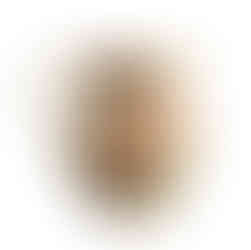Search
In their Element
- willa
- Feb 2, 2024
- 2 min read
I hope you will forgive me for repeating an older post... but a nasty cold this week meant this is the perfect time to shine the light once more on a fabulous set of figures I came across last year.
You may know that I love porcelain figures from the 18th Century. I have a whole shelf full of Derby and Bow figures, and recently I was lucky enough to add four new ones that seem to be entirely in their element.
These are a series of figures by Bow called "The Four Elements". We see Ceres representing Earth, Vulcan representing Fire, Neptune representing Water and Juno representing Air. Made around 1765, these four are still beautifully bright and crisp, and with their tall stature of about 29cm (11"), they are rather imposing. They were shaped after sculptures that can be found in the gardens of Versailles.
Porcelain figures were used in the 18th Century to adorn the dinner table when dessert was served; groups of figures served to express something about the host, the guests, or to direct the conversation. A favourite pastime of the period was to guess the nature of Classical gods and goddesses, and thus show off one's erudition. You can read more about this in a column I wrote for Homes & Antiques here.
Ceres is based on "La Terre" by Benoit Massou, which stands at the Parterre du Nord. She holds a cornucopia filled to the brim with fruits and flowers, signifying the Fruits of the Earth; beside her is a large recumbent lion, signifying the Kingdom of Animals.
Vulcan is based on a sculpture called "Le Feu" by Nicolas Dossier, which stands at the Parterre de Latone. Again the female original has been adapted to a male, this time an effeminate youth. We see Vulcan standing by a flaming brazier, warming his hands; at his feet is a phoenix issuing from flames.
Neptune is based on a marble called "L'Eau" by Pierre Legros, which stands at the Fontaine du Point du Jour. But while Legros' sculpture depicts a female, Bow has turned this into the mature, bearded male Neptune, pouring water from an urn. Beside him is a large dolphin in bright colours.
Juno is based on a sculpture called "L'Air" by Étienne le Hongre, which stands at the Parterre d'Eau. We see her waving her garment, signifying air, and at her feet is Jupiter, appropriately in his favourite guise of an eagle. Jupiter is both Juno's husband and twin brother (that's a rather complicated story!) and often appears in disguise.
The figures have provenance too: they came from the collection of John Buckingham, a well-known collector of Bow figures.
Where to find stock
You can find all my figures here in my shop, and you can find all my available items here, and if you want to stay up to date with new additions, find me on Instagram, where I put up pictures with a story several times a week.
Happy weekend, and I hope you will be in your Element! 🦁🔥🐬🦅
This week's new treasures:


































































Comments